


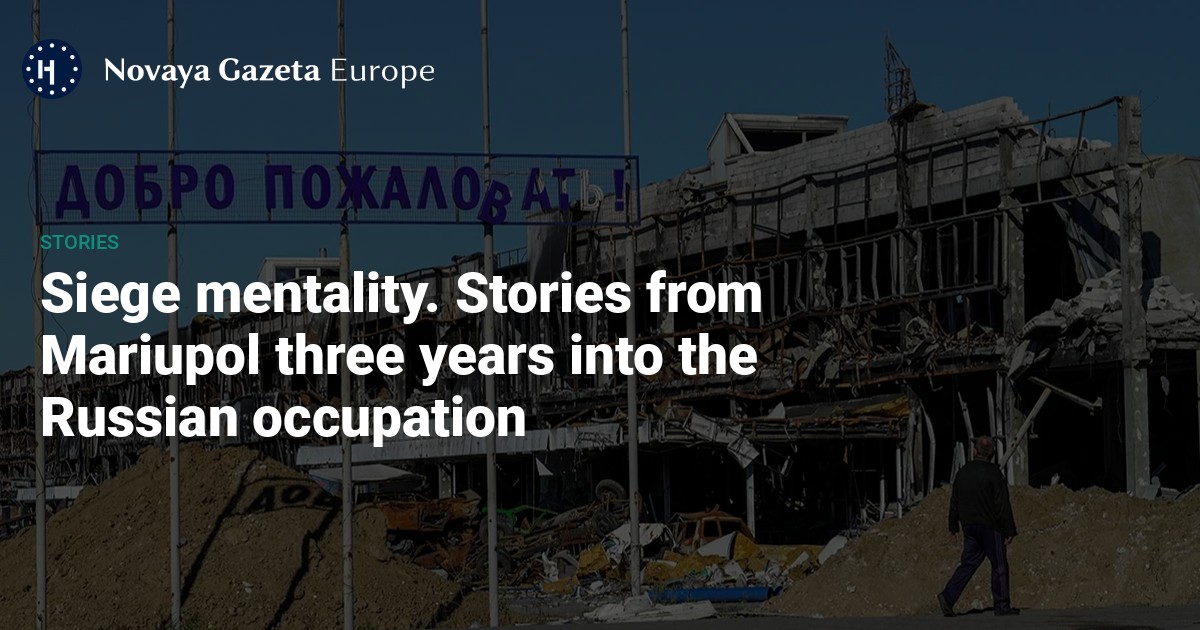
The Ukrainian port city of Mariupol has been under Russian occupation for over three years. According to a recently erected war memorial the Russian press never tires of sharing, the Russians “liberated the city from Nazis” on 20 May 2022, after effectively razing it to the ground in months of indiscriminate shelling and laying siege to the remaining Ukrainian troops who were holding out in the city’s Azovstal steelworks.
Mariupol’s pre-war population of half a million people today stands at around 100,000, and while the reconstruction of the city is constantly featured in reports on Russian state TV, the lived reality of those who have remained — some of whom were unable to leave, while others didn’t want to — differs significantly from the version Russian television audiences are now familiar with.
A year ago, Yura and his mother Maryna returned to Mariupol, having fled the city three years ago, taking with them all they could stuff into a single suitcase. First they settled in Moscow, then in the Moscow region, but ultimately decided it was time to return home last summer. Whatever happens, they thought, being within their own four walls would help, even though they were fully aware that little more than the walls of their old house remained.
Before the invasion, Yura and Maryna, who was already close to 80, lived together on the sixth floor of a nine-storey Soviet apartment block in Mariupol. In February 2022, when Russia’s full-scale invasion of Ukraine began, Maryna had a stroke that left her paralysed in one arm and one leg. Despite the fact that she was still recovering in hospital when the Russian “liberators” entered the city, Maryna was discharged and sent home as all Mariupol hospitals that survived the Russian assault on the city were ordered to turn their patients out, their hospital beds being needed by the new authorities for their own sick and injured.
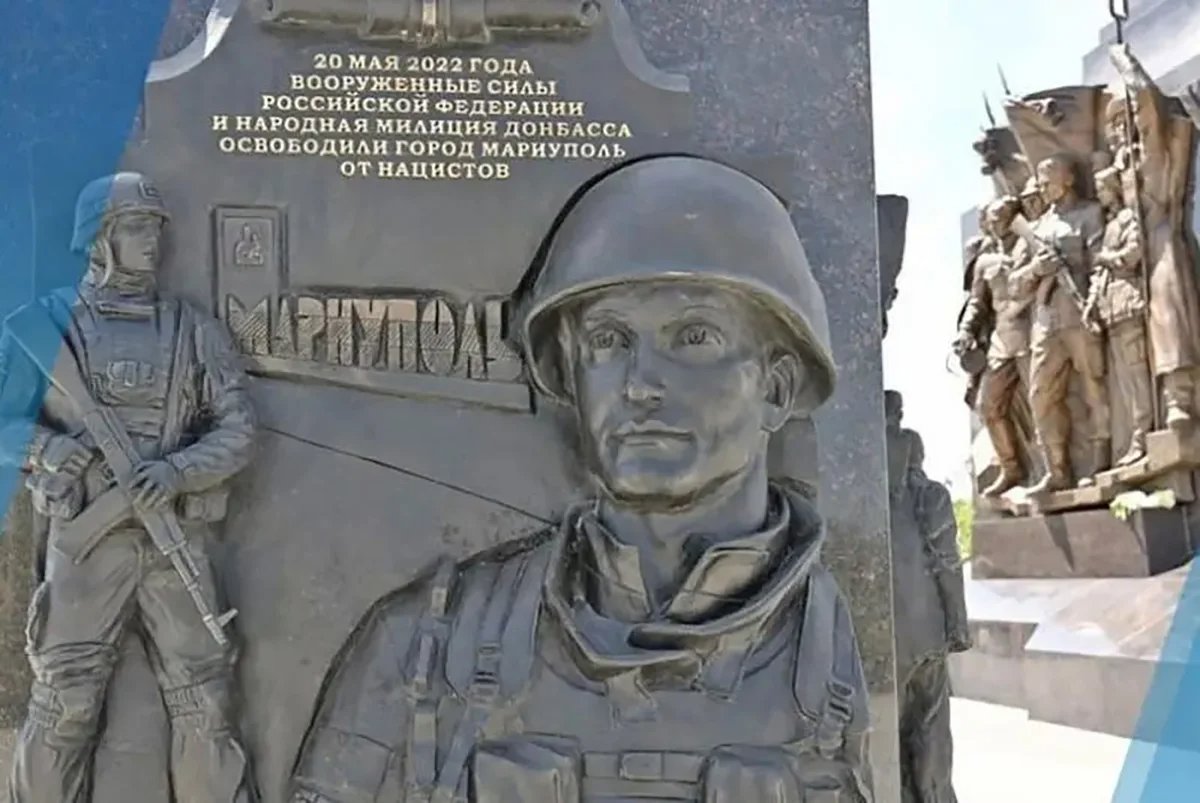
Memorial in Mariupol, Ukraine. Photo: topwar.ru
Yura somehow managed to get his semi-paralysed mother into the building, then to the elevator, and up to their apartment. Shortly afterwards, a shell hit the apartment building, destroying the elevator and the staircase, leaving Maryna unable to leave. While neighbours hunkered down in the basement, she and Yura lay on the ground in their sixth storey apartment and prayed.
The “liberators” did eventually lower Maryna from the sixth floor in her wheelchair, while Yura somehow managed to descend the ruins of the stairwell. Then came a long journey to Russia, as there was nowhere else to go. They spent a year living in a tiny Moscow apartment belonging to Yura’s sister, before moving to a rented room in a wooden house in the Moscow region for another year.
While the apartment was empty, looters took whatever they could get down from the sixth floor.
In the spring of 2024, Yura received a call from his Mariupol neighbours. They told them that the new government had said it would seize the homes of anyone who didn’t present themselves in person with proof that they had become Russian citizens. They decided to go home.
Volunteers took them back to Mariupol, but there was no way they could move back into their beloved apartment. The windows and door were broken, the interior was completely destroyed, and everything was littered with shrapnel and debris from the collapsed walls. But even if the apartment had been habitable, the lift still didn’t work, and there would have been no way for Yura to drag his mother up to the sixth floor in her wheelchair.
With no other options, they moved to a dacha outside the city that Yura’s father had built, which still had beds and an old refrigerator in it, even if there was no running water or electricity. Somehow, in the summer months, they got by without either.
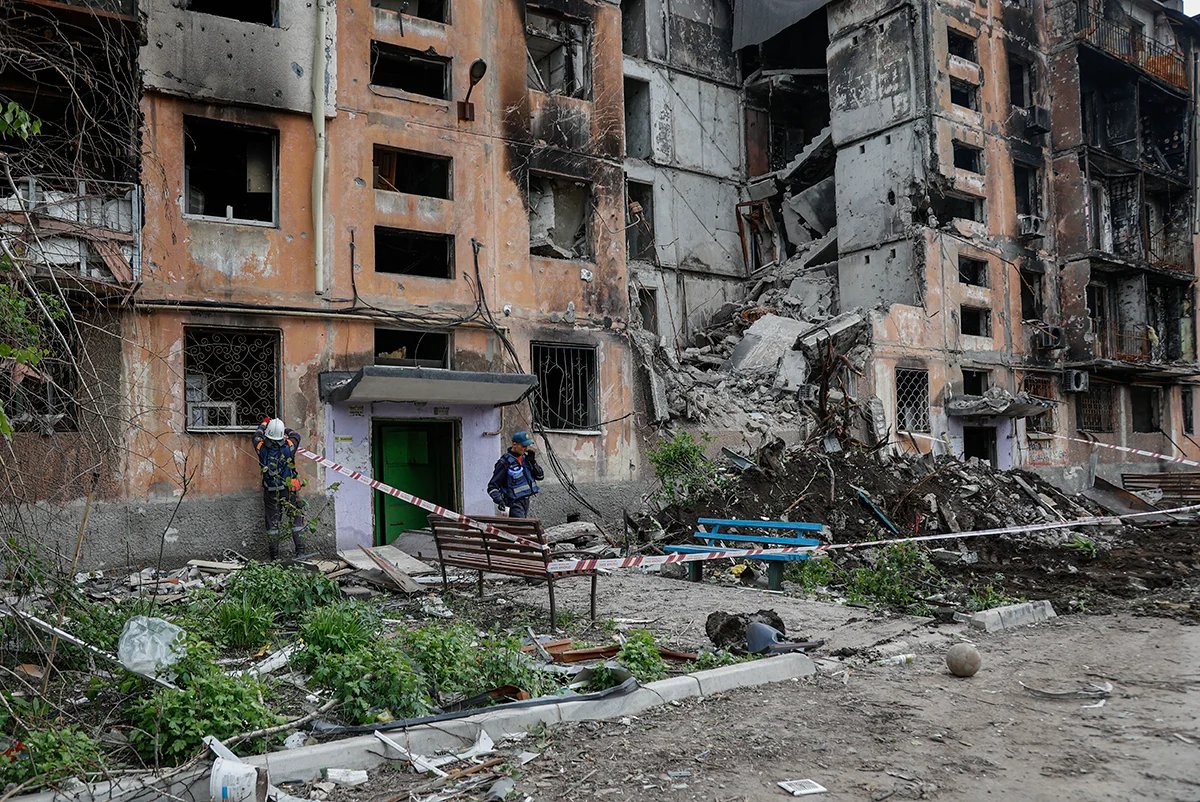
A destroyed home in Mariupol, Ukraine, 21 May 2022. Photo: Alessandro Guerra / EPA-EFE
That summer, Yura went back and forth between the dacha and the apartment to clean up the debris, dust and dirt that had accumulated while there were no windows. He would clean up as best he could for an hour or two before hurrying back to his mother.
The Russian-installed authorities in Mariupol issued one-off payments of 240,000 rubles (€2,700) to pay for repairs to those whose homes weren’t completely destroyed. Yura calculated that at current Mariupol prices, that wouldn’t even cover putting up new wallpaper — the least of their concerns in an apartment with no doors, holes in the walls, crumbling tiles and a boiler that had been stolen by looters.
Maryna has not left the apartment since she was taken up to the sixth floor in the autumn.
By the winter, however, the staircase had been replaced, the heating was back on and some Moscow-based volunteers had replaced the boiler.
Once autumn came around, they could no longer remain at the dacha, so Yura took his mother back to the city, where there was heating and gas and he didn’t need to go to the store to buy water for his mother to wash with. First, he rolled the wheelchair from the dacha to the house on foot. He says he can’t remember how long it took, but he had to stop and rest several times. Then he had to carry his mother up to the sixth floor because the lift remained out of order and wasn’t due to be repaired until the following year.
“We got used to it, somehow,” he says. “It’s quiet here. You don’t see much military equipment anymore. And mum only needs a kitchen, bedroom and toilet. But on the inside I’m a shell of my former self. Everything has been destroyed or stolen.”
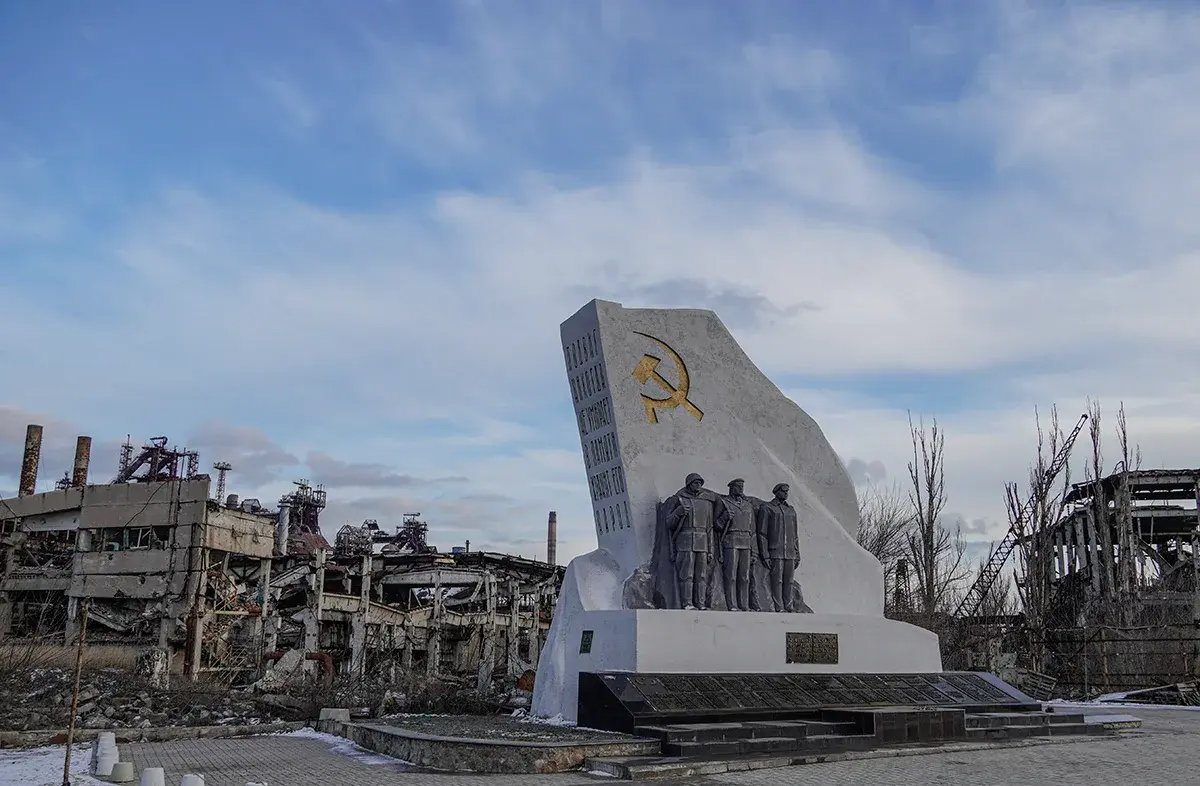
A restored Soviet war memorial on the site of the Azovstal steelworks, Mariupol, Ukraine, 16 February 2025. Photo: EPA-EFE
While the apartment was empty, looters took whatever they could get down from the sixth floor. The good thing about the stairs being destroyed was that at least they were unable to steal the beds, the washing machine, the stove and the fridge.
Maryna has not left the apartment since she was taken up to the sixth floor in the autumn. “I haven’t been outside for over six months. I haven’t had any fresh air,” she complains.
Though they regularly see news reports about how good things in Mariupol are under the new government, both dream of leaving.
“Yura went to the clinic to ask for a doctor to come and see me, but they told him that nobody was available. There’s nothing good in my life anymore. Everything we had was destroyed. I walk around the room, with a stick in one hand and Yura supporting me. That’s my life now.”
Yura only leaves the house to go to the store or to the pharmacy as he doesn’t want to leave his mother alone for any longer. Otherwise, the two of them sit there together on the sixth floor. A curfew remains in place in Mariupol, though Yura says he doesn’t even know when it begins as he doesn’t go out in the evening.
Though they regularly see news reports about how good things in Mariupol are under the new government, both dream of leaving. To do that, though, they would first need to sell their barely habitable apartment in a bombed out building.
Though she lives and works in Moscow, Lera is a volunteer who travels to the “new territories” — the term used by the Russian authorities to describe the regions of Ukraine it now occupies — every two to three months for the past three years. There is no shortage of tasks to be completed and she says that the changes that have taken place in that time are easy to see.
Mariupol has been awash with cranes for the past three years. The city is being actively “quote-unquote rebuilt”, says Lera. Any buildings that have not already completely collapsed are deemed fit for repair — a winch is installed right on the roof, or what’s left of it, the house is plastered and the ceilings are somehow replaced.
“They’re like Potemkin villages and they remain empty.”
Despite these efforts, Lera says that the buildings begin falling in on themselves again within a month. From the outside, things all look satisfactory and even fit for human habitation, but go inside and “everything crumbles under your feet, flakes off the walls and leaks from above”. Buildings deemed beyond repair have their doors and windows removed for use in those being rebuilt.
“The city still looks awful,” Lera continues. “Even with these colourfully rebuilt buildings. They haven’t started on the historical centre yet. It’s still in ruins. If you enter the city from the east and drive along the street leading to Azovstal, it’s an area of private homes with burnt-out gas stations and ruined buildings that nobody is repairing.”

New housing in Mariupol, Ukraine, 16 February 2025. Photo: EPA-EFE
“And then, bam! — there are three brand-new high-rise buildings. They were the first to be built straight after the Russian invasion. They are all ethereally beautiful, white and blue in colour with tiled façades. But if you look more closely, you’ll see you can’t get inside. There aren’t even any doors. They’re like Potemkin villages and they remain empty.”
Three years on and Mariupol, a city supposedly “liberated from Nazis”, still operates a military curfew, as if the local authorities themselves consider the city to be under occupation. Young people are afraid to venture out in the evening. Officially, they’ve been told that people from the “new territories” won’t be required to join the Russian armed forces for the time being, but in practice, young men are abducted from the streets for military service all the time.
“Anybody with children approaching military age flees Mariupol in the hope of somehow making it to Europe,” says Lera. “They’ve only just realised what’s happening. ... Soon there’ll be no young men left in the ‘new territories’ at all.”
But there are happy Mariupol residents too, or so they say. Despite once serving in the Ukrainian army, Natalia* sounds happy when she talks about her new life in her post-war hometown. The war, she insists, ended in May 2022, when Russian forces captured the city. “I’d been waiting for that to happen since 1991,” Natalia says with feeling.
Though Natalia currently lives in Moscow, she is quick to stress that she will never leave her hometown altogether, which she describes as being even more beautiful now than it was before. According to her, the only problem is that there aren’t enough doctors, for some reason, and she’s unable to see a gastroenterologist.
Having previously been sent to Odesa for an operation, Natalia is now undergoing treatment in what she calls a “Russian clinic” in Moscow. She still isn’t fully used to saying that Mariupol is “Russian” now too.
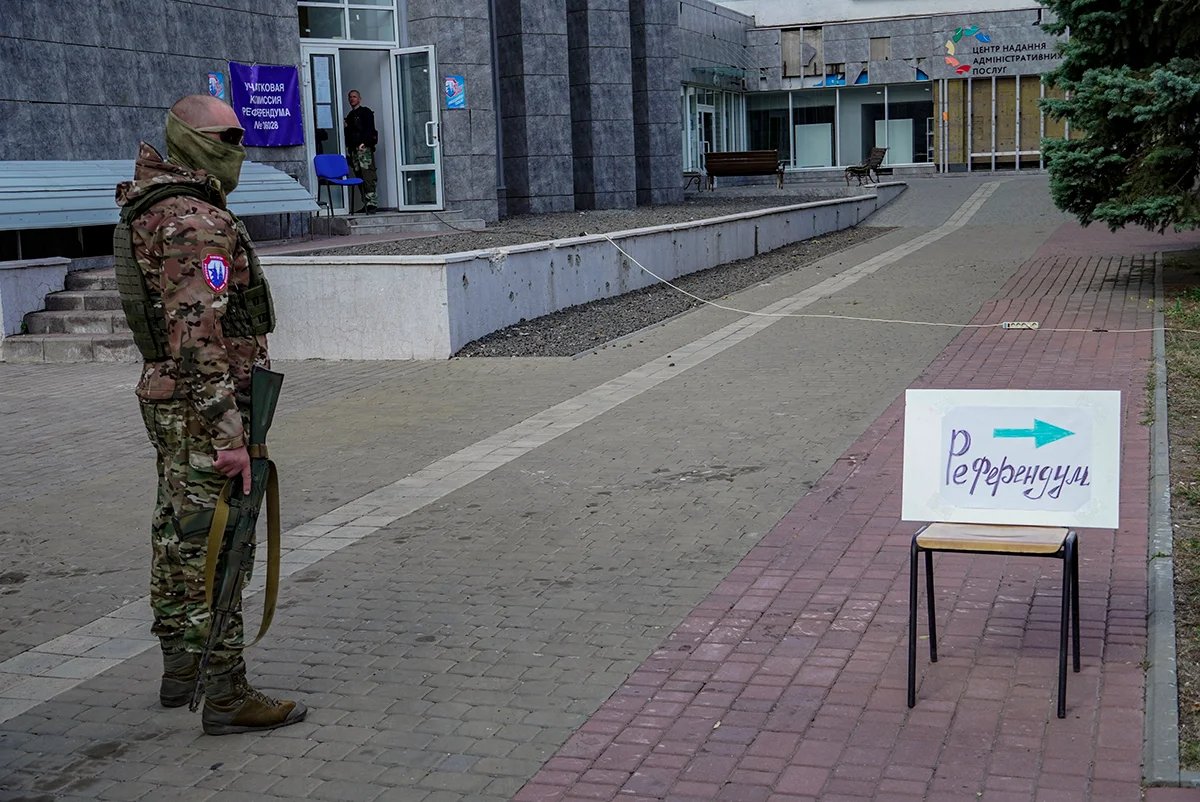
A referendum is held on Russian annexation, Mariupol, Ukraine, 25 September 2022. Photo: EPA-EFE
In September 2022, Russia held a series of controversial referendums in the regions of Ukraine it had occupied on whether they should formally join the Russian Federation. Natalia, a woman of firm views, had worked as a poll clerk during Ukrainian elections for many years, and so when she was asked to reprise that role for the referendum, she leapt at the chance.
Natalia says “a lot” of Mariupol residents voted during the five-day referendum, especially those voting from home. “And would you believe it! 90% voted in favour!” says Natalia, the joy audible in her voice. “Of course some people voted against, but very few.”
Before the war, the population of Mariupol was 500,000. By the time the referendum came around, there were a little over 100,000. Those who wanted to — and could — had left the city by then. However, some were too afraid to leave, while others didn’t want to. The others were the ones who voted in the referendum, which was dismissed as illegal by the international community.
“I stayed in the city!” Natalia says proudly. “And now I’ll never leave! As soon as I finish my treatment in Moscow, I’ll go straight back.”
Sveta died in a St. Petersburg hospice in July. Volunteers who helped Ukrainians living in Russia’s second city brought her audiobooks as she could no longer read herself. On one occasion, the volunteers left Sveta to talk to the doctor, and when they came back, Sveta had died, quietly and painlessly.
Sveta had advanced breast cancer. A few days before she died, she had called her friend Vera in Mariupol, with whom she had remained in close contact, and told her how happy she was to be in the facility, where, at least, she was no longer in pain.
Vera and Sveta had been friends since childhood, when they were neighbours in Mariupol and had gone to the same school. In 2020, Vera recalls, Sveta found lumps in her breast. She waited to get them checked out, but in late 2021, went to Mariupol’s in-patient cancer clinic.
“She was about to go into hospital. The doctors had got things moving. She had done all the tests she had to do to be hospitalised, and then the war began,” Vera says. “And then everything dragged out. Sveta started bleeding, and then there were airstrikes and she sat in the basement for three days and couldn’t get out.”
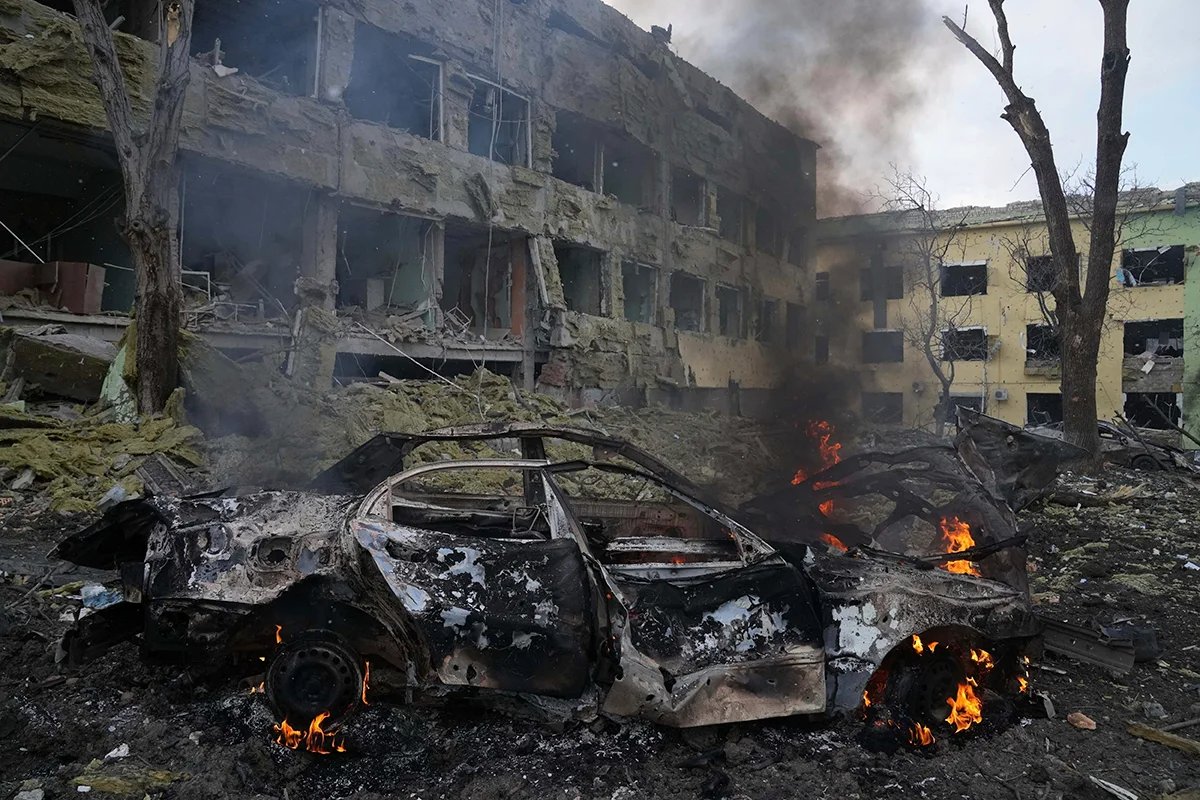
A destroyed maternity hospital in Mariupol, Ukraine, 9 March 2022. Photo: Yevhen Maloletka / AP Photo / Scanpix / LETA
Meanwhile, the hospital Sveta was due to be admitted to was destroyed, meaning that there was nowhere for her to have the surgery she needed. She knew that her cancer was aggressive and that every day counted. Friends helped her out of the house and one neighbour even drove her, under fire and with flat tyres, to a still functioning intensive care hospital at the other end of the city, but nobody was able to help her. An ambulance took her to Novoazovsk, and from there to the regional capital Donetsk where she spent seven months in hospital until the doctor there admitted that there was nothing he could do for her.
Sveta’s 80-year-old mother was home alone with no one to look after her.
Sveta thought constantly of her mother back home in Mariupol, worrying that if she didn’t go back now, she may never see her again.
Volunteers, both Russian and European, unsuccessfully attempted to arrange for Sveta to have treatment in Germany. Doctors at a private medical centre in St. Petersburg who worked with volunteers and discreetly helped Ukrainians pro bono were waiting for Sveta. The assumption was that they would do the necessary tests and Sveta would be transferred to a clinic in Europe.
However, the tests showed that it was too late. In the two years since the war had begun, the tumour had become inoperable and chemotherapy would be insufficient to combat its spread. Sveta would scream in pain, and the volunteers would call an ambulance so that she could at least be given an injection of painkillers.
Throughout her illness, Sveta thought constantly of her mother back home in Mariupol, worrying that if she didn’t go back now, she may never see her again. She would beg to be taken home, then cry, before gradually forgetting the situation as the painkillers took effect. The volunteers eventually persuaded her to go to a hospice where she died peacefully.
*Not her real name
The Russian government has banned independent media. We were forced to leave our country in order to keep doing our job, telling our readers about what is going on Russia, Ukraine and Europe.
We will continue fighting against warfare and dictatorship. We believe that freedom of speech is the most efficient antidote against tyranny. Support us financially to help us fight for peace and freedom.
By clicking the Support button, you agree to the processing of your personal data.
To cancel a regular donation, please write to [email protected]
VPNovaya
Help Russians and Belarusians Access the Truth
